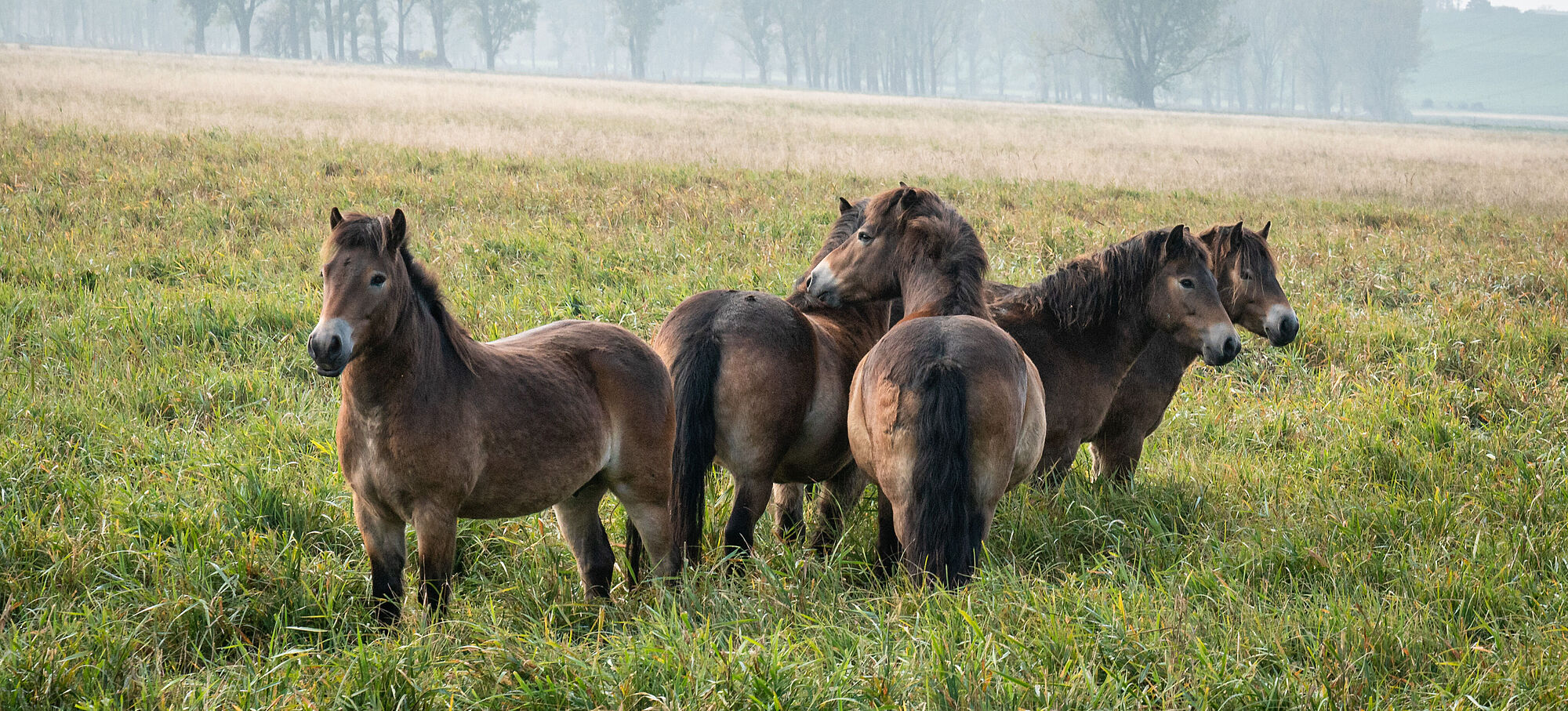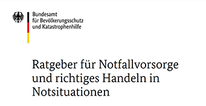
© Manuel Pape
With water buffaloes and exmoor ponies to a new biological diversity / District administrator informs himself on the pasture areas of the agricultural cooperative Emden
These days. District Administrator Martin Stichnoth, accompanied by Councilior Petra Naumann and Matthias Wilcke, Head of the Nature and Environment Office, is finding out about the project "With water buffaloes and exmoor ponies to a new biodiversity" on the pastureland of Agrargenossenschaft Emden e. G..
Katrin Windel and Jörg Brämer from the lower nature conservation authority of the Landkreis Börde will be responsible for the technical part. Together with employees of the Bundesforstbetrieb Mittelelbe, they will explain the background of the project.
Accordingly, several nature conservation compensation and replacement measures required under the Nature Conservation Act were already implemented here in the 1990s in the course of the widening of the A2 highway. The region: the Seelsche Bruch is located between Hakenstedt, Uhrlseben, Erxleben/Eimersleben, Ummendorf and Ovelgünne. The goal is to keep the precipitation water that accumulates in the area during the winter months in the area by means of various weirs and dams. In this way, the meadows and forest areas should be kept moist until May / June. In this way, the living conditions for various animal and plant species of the wet grassland should be improved. However, in the years 2011 to 2013 with above-average precipitation, it turned out that the concept did not work.
Due to the high water levels, a temporary paradise for a variety of waterfowl was created. Ornithologists came to observe rare bird species here. However, the species of grassland, such as lapwing, curlew, snipe had no chance to breed. Between open water areas and high reeds there were no short grassy meadows during the breeding season. Mowing of the areas was only possible after the water receded in late summer, i.e. at a time when the breeding season was long over.
This is where the Landkreis Börde comes into play. The lower nature conservation authority developed the idea of keeping water buffalo. There were a number of supporters. Starting in 2012, the responsible parties, with the professional support of experts from Thuringia, lobbied for a change from mowing use to near-natural extensive grazing of the area with cattle and horses. The discussion with the partners of the road construction administration, the federal forestry company, various specialized authorities and, last but not least, with the farmers working on the land was not always easy, but in the end it was successful.
Decisive for the first visible successes of the land use conversion and for the orientation of the management towards an increase of the biodiversity of the Seelscher Bruch was the management of the Agricultural Cooperative Emden. Managing director Silke Fischer and board member Michael Daul are wholehearted when they talk about their animals. They give the excursion participants information about the water buffalo, Exmoor ponies and Fleckvieh cattle that graze on a fenced-in partial area that currently covers about 80 hectares.
They also want to share their enthusiasm with other people. That's why the Emden agricultural cooperative applied for funding for a viewing tower at the edge of the grazing area. From here, visitors can also observe the animals further away without having to enter the pasture. Because, entering the pasture on your own can be life-threatening. The animals can move freely in the large area and are usually in separate herds far away from each other. The Fleckvieh cattle in particular are curious and come running from afar when people move around the pasture. The district administrator's companions also held their breath for a few minutes as about 20 cows and a bull walked past the group of visitors, stopped briefly, and only continued on their way to the other part of the paddock after the owner's energetic appearance.
The enthusiasm of the farmers and the commitment of the agricultural cooperative did not remain without effect. District Administrator Martin Stichnoth is looking into the possibility of financial support from the Landkreis Börde for the erection of an observation tower. He also hopes that this will increase the attractiveness of the Börde villages and further stimulate tourism in the region.
The nature conservation background: the grazing animals have been in their paddock for less than a year. Nevertheless, the area has already changed noticeably. Due to the different feeding behavior of the 3 animal species, there are both short-grass areas and areas with tall grass. This considerably improves the conditions for the breeding of various bird species. The water buffaloes prefer to eat reeds. As a result, the banks of the shallow pools created as spawning waters are clear again throughout the year and can fulfill their ecological purpose. However, the grazing area still lacks flowering herbs. During the excursion, the employees of the nature conservation authority and the federal forestry operation agreed on ways to support the Landkreis Börde in increasing the biodiversity of plants and animals on the grassland areas in the Seelscher Bruch.
The excursion participants ended their tour looking forward to the next meeting. The project "With water buffaloes and exmoor ponies to new biological diversity" of the Federal Forestry Enterprise receives the title "UN Decade Project".



